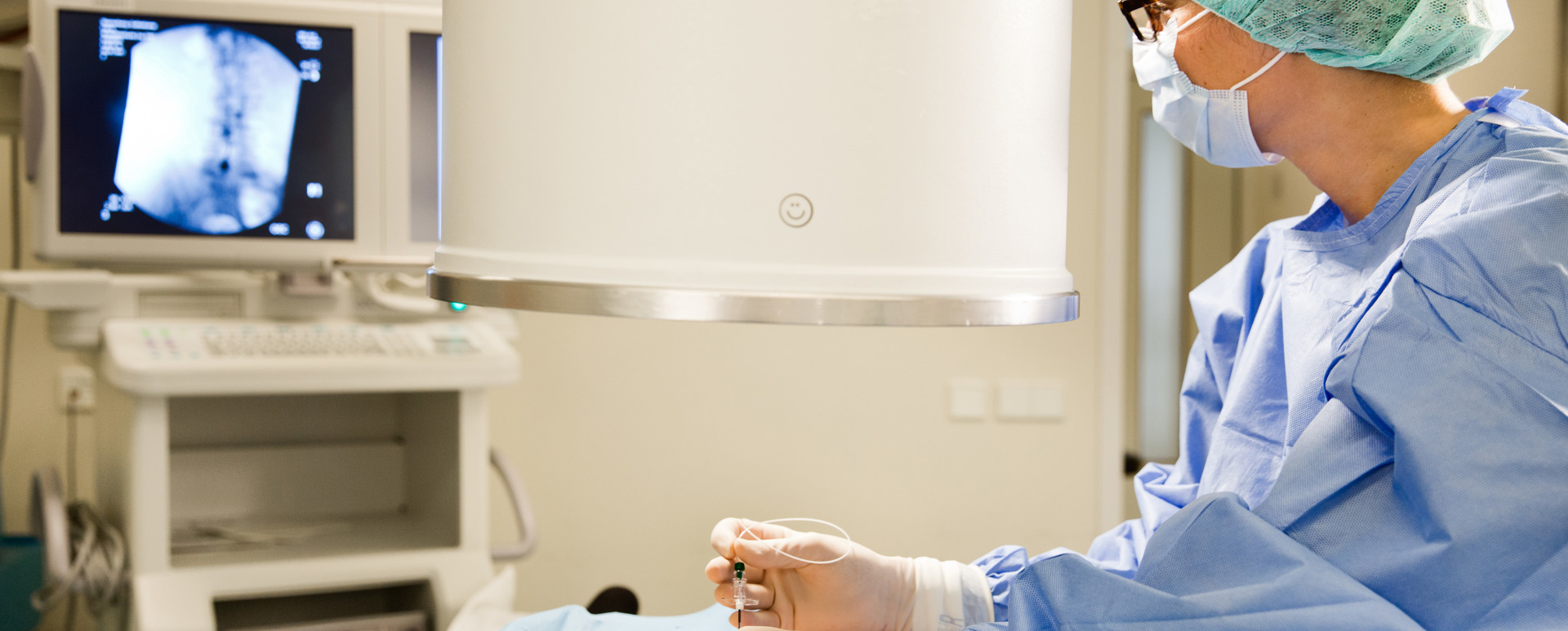Epidural and spinal pain treatment
During epidural and spinal pain treatment, the painkiller is administered into the subarachnoid space or the surrounding area (epidural space) by using a catheter. Your physician will use this type of pain treatment if other pain management proves ineffective or causes significant side effects.
The epidural or spinal catheter will be placed at the recovery department. We will continuously monitor your blood pressure and heartbeat. You will then receive the dose of pain treatment that best suits you. You may need to spend an average of three days at the hospital.
Important information
Please let us know if you are taking a blood thinner. You may need to quit taking this medication several days before the procedure. Certain painkillers can affect blood coagulation. Please consult your physician about your painkillers. If you have any sensitivities to iodine, bandages, contrast agents, or anesthesia, please consult your pain specialist. X-radiation may harm an unborn child. If you are pregnant or suspect you may be, please let us know before the start of the treatment.
 nl
nl
 Nederlands
Nederlands
